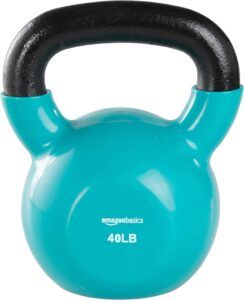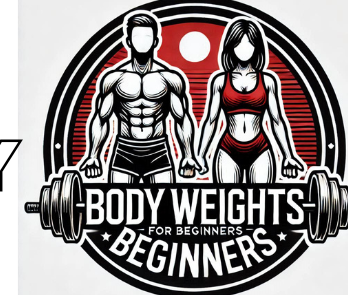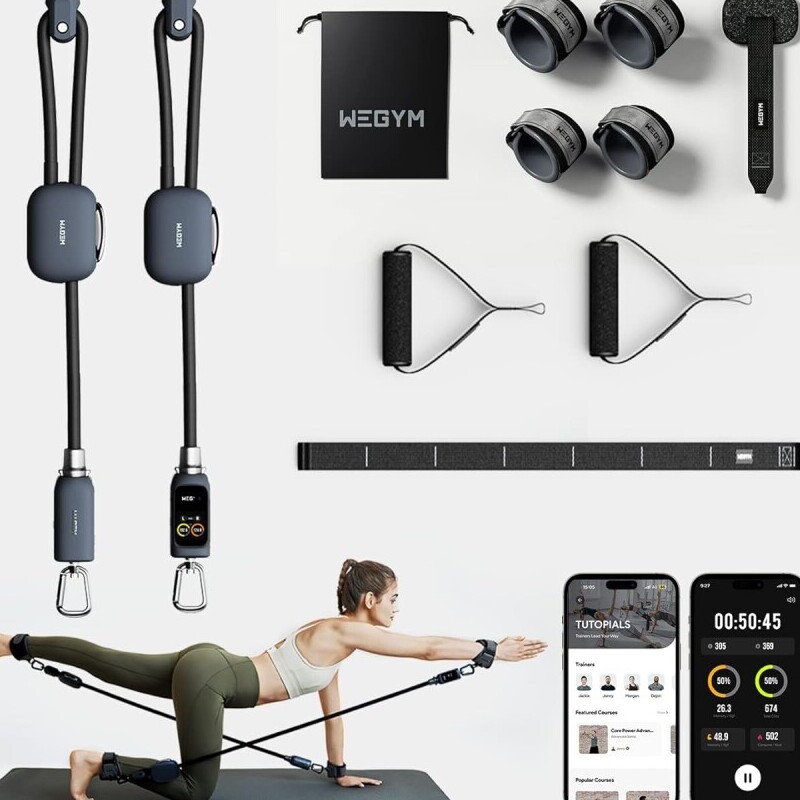-
“Ever feel like you’re putting in the work, but the results just aren’t showing? You’re not alone! Many people struggle with workouts that seem to drain energy without delivering muscle growth, fat loss, or improved overall fitness. It can feel frustrating when you’re dedicated but still not achieving the gains you expect. In this post, I break down the top reasons why your workouts aren’t working. I also explain how to fix them today. Whether you’re wondering why my workouts aren’t working or searching for ways to fix workout mistakes, this guide is here to help.

Common Reasons Your Workouts Aren’t Working
Many people fall into common pitfalls that undermine the effectiveness of their workouts. Understanding these mistakes is the first step toward better results. Let’s look into some factors that might be holding you back.
You’re Not Training with the Right Intensity
One major reason your workouts might not be working is that you’re not challenging your muscles enough. If you stick to the same weight or reps over a long period, your muscles adapt and progress slows down. This concept is known as progressive overload, where gradually increasing the resistance or switching up the exercise intensity forces your muscles to adapt and grow stronger. For instance, incorporating resistance bands or dumbbells into your sessions can introduce the necessary challenge. Many fitness enthusiasts have found success by gradually increasing weight or repetitions to stimulate growth. For those looking to upgrade their workout routine, consider checking out a recommended gear set here to add diversity and challenge your muscles more effectively. Read my comperisiam post on adjustable dumbbels for intensity training!

Your Form & Technique Are Off
Incorrect form is another common reason workouts aren’t yielding the desired results. Poor technique doesn’t just reduce the benefits of your exercises. It can also increase the risk of injury. Moving through exercises with the wrong posture or alignment means that the right muscles aren’t being targeted, and this can lead to wasted effort. For example, slouching during squats or overextending during push-ups means you’re not working the core properly. Many fitness experts recommend periodic technique reviews. Taking time to record your workouts or comparing your form to instructional videos on YouTube can help spot and correct mistakes. It might even save you from long-term injuries that could sideline your progress.
Your Diet Is Holding You Back
Even with the most disciplined routines, a poor diet can drastically undermine your progress. It’s a common saying in the fitness world: you can’t out-train a bad diet. If your meals lack the protein needed for muscle repair or are loaded with empty calories, you’re not fueling your body properly. Many gym-goers face this dilemma: they work hard at the gym only to see little change because their nutritional intake doesn’t support their physical efforts. Tracking your food intake with a meal tracking app can provide insights into your eating habits and highlight areas for improvement. If you need a helpful tool, check out a highly rated meal tracking app here that many have found useful in balancing workout performance with nutrition. Read! About Understanding Protein With Your Work-Outs
You’re Doing Too Much Cardio & Not Enough Strength Training
Cardio is fantastic for improving endurance and burning calories, but an overemphasis on it without balancing with strength training could leave you lacking muscle definition and strength gains. It’s a misconception that more cardio always equals better results. Overdoing cardio may lead to muscle loss, especially if you’re not incorporating adequate strength training to build lean muscle mass. A balanced plan that includes both cardio and strength exercises is key. For a balanced routine that combines these elements in a smart way, you might consider exploring a 7-day workout plan that many fitness enthusiasts have seen success with.
You’re Not Giving Your Body Time to Recover
Recovery is often overlooked in many fitness routines. Muscles actually grow and repair during rest periods. Not during workouts. If you’re not getting enough recovery, whether through proper sleep or days off from intense training, your body doesn’t have the time to rebuild stronger. Overtraining can lead to fatigue, frequent injuries, and ultimately, a decrease in performance. Incorporating rest days, prioritizing sleep, and staying hydrated all contribute to effective recovery. Stretching before and after workouts can also reduce stiffness and speed up recovery times. Giving your body the time it needs to recover might just be the hidden key to unlocking better results.
How to Fix These Mistakes & See Results Faster
It might sound like there is a lot to fix, but the good news is that every mistake has a simple solution. The right program tailored to your needs can help you overcome common challenges and maximize your results quickly.
One powerful way to revolutionize your workout routine is by following a structured fitness program. I’ve partnered with a leading online fitness course that takes an all-in-one approach to training. This program provides step-by-step guidance on how to build strength, lose fat, and see meaningful results without overcomplicating your routine. You can learn proper exercise form, get personalized workout plans, and see how nutrition plays into overall performance. If you’re serious about finally seeing the gains you’ve been working for, I encourage you to check out this fitness course right here.
On top of the guidance offered by the course, I’m excited to share my personal 7-day free home workout plan—the perfect kickstart for those who need structure and a little extra push. Signing up for this free plan not only gives you immediate access to proven routines, but it also opens the door to ongoing fitness tips that can keep you motivated. You can sign up here and start transforming your routine today.
Frequently Asked Questions
It’s natural to have questions when trying to improve your workout results. Here are some answers to common queries:
Question: What if I’m not seeing any muscle growth even after months of training?
Answer: Often, inadequate intensity paired with poor form or an imbalanced diet can be the culprits. Experimenting with progressive overload and ensuring you’re following a nutritionally balanced diet can help. Also, make sure you’re giving your muscles time to recover with proper rest days.
Question: How can I balance cardio and strength training for optimal results?
Answer: Combining moderate cardio with regular strength training is key. Rather than dedicating entire sessions solely to cardio, mix in strength exercises within your routine. This combination helps you burn fat while building muscle mass.
Question: Why is proper form so important even if I lift heavier weights?
Answer: Proper form ensures that you’re effectively targeting the right muscles and reduces the risk of injury. Lifting heavier weights with poor technique can lead to imbalances and potential damage, which in turn restricts progress.
Question: Does recovery really impact performance that much?
Answer: Absolutely. Muscles need time to repair and grow. Ignoring recovery by overtraining often results in fatigue and injury, effectively stalling your progress. Incorporating adequate rest, quality sleep, and proper nutrition is essential for muscle growth.
Additional Tips for a Successful Workout Routine
Here are a few extra pointers to ensure you stay on track:
- Set Realistic Goals: It can be motivating to set clear, achievable targets. Focus on incremental progress and celebrate small victories along the way.
- Track Your Progress: Keeping a workout journal or using a fitness app can help you see improvements over time. Once you start seeing patterns, adjustments become easier to make.
- Mental Health Matters: Exercise is not just about physical strength. A balanced routine that includes mental relaxation, like meditation or breathing exercises, can boost overall performance.
- Stay Consistent: Every workout contributes to progress. Missing a session here and there is normal, but consistency in the long run is what makes a difference.
- Educate Yourself: Fitness is constantly evolving. Keeping up with new techniques, workout splits, and nutritional strategies can help you refine your routine.
The Basics: Setting Up Your Program for Success
A fundamental part of making your workouts work is setting up a program that addresses your specific needs. Think of a fitness program as a map that leads you to your goals. It should include a balanced mix of strength training, cardio, and flexibility exercises. For beginners, a program that introduces variety without overwhelming complexity can be very beneficial. Addressing any weakness—be it training intensity, nutrition, or recovery—in a structured manner will yield better results over time.
The online fitness course I mentioned earlier is designed to cover all these bases. It’s structured in a simple yet effective way: you start with assessing your current level, gradually incorporate new exercises with proper guidance, and then steadily build up your intensity while balancing recovery and nutrition. Many users have experienced dramatic improvements in their work capacity and body composition after following its modules. If you’re ready to change your routine and start building sustainable results, this might be the right opportunity for you.
More Insights and Science Behind Effective Workout Strategies
For those who want to dig into the science of fitness, understanding the biological basis for muscle growth and recovery can provide a real boost to your motivation. When you work out, tiny tears form in your muscle fibers. Your body repairs these tears by fusing fibers together, which is how muscles get bigger and stronger. This process is influenced by hormonal responses that can be optimized through proper nutrition and sleep. Research has shown that combining strength training with adequate protein intake and rest can maximize the repair process, paving the way for optimal performance improvements.
Additionally, mixing up your workout routine not only keeps things interesting but can also help you avoid plateaus. When you switch exercises, you encourage different muscle groups to get involved, keeping your routine fresh and effective. It’s important to read up on current fitness research or listen to expert podcasts that break down complex ideas into practical tips. By staying informed and making small, deliberate tweaks to your program, you can see noticeable improvements in your endurance, strength, and overall energy levels over time.
This extra insight into the mechanics behind your workout can empower you to make changes with confidence. Remember, consistency paired with informed adjustments is what leads to long-term success. So, take time to learn about how your body works as you push it to new heights, ensuring that every session leaves you one step closer to your fitness goals.
Wrapping up
The adventure to effective workouts involves understanding and correcting common mistakes. Whether you’re not training hard enough, struggling with form, fueling your body inadequately, or ignoring the importance of recovery, solutions are available that make it easier to see progress. By incorporating the right intensity, improving your form, balancing your diet, moderating cardio with strength training, and allowing for proper recovery, you set the stage for real improvements.
Don’t forget to consider a structured fitness program for concrete guidance. If you’re ready to stop wasting time and start seeing tangible results, check out the recommended fitness course and grab my free 7-day workout plan by clicking the links provided. Your best workout results are just a few smart changes away! Stay dedicated, keep refining your strategy, and remember that every step, no matter how small, is progress toward a healthier you.

